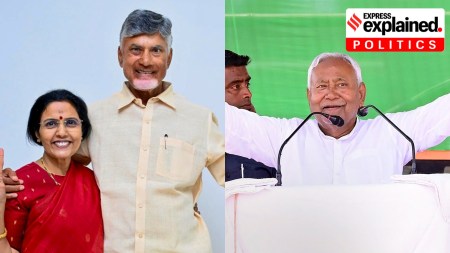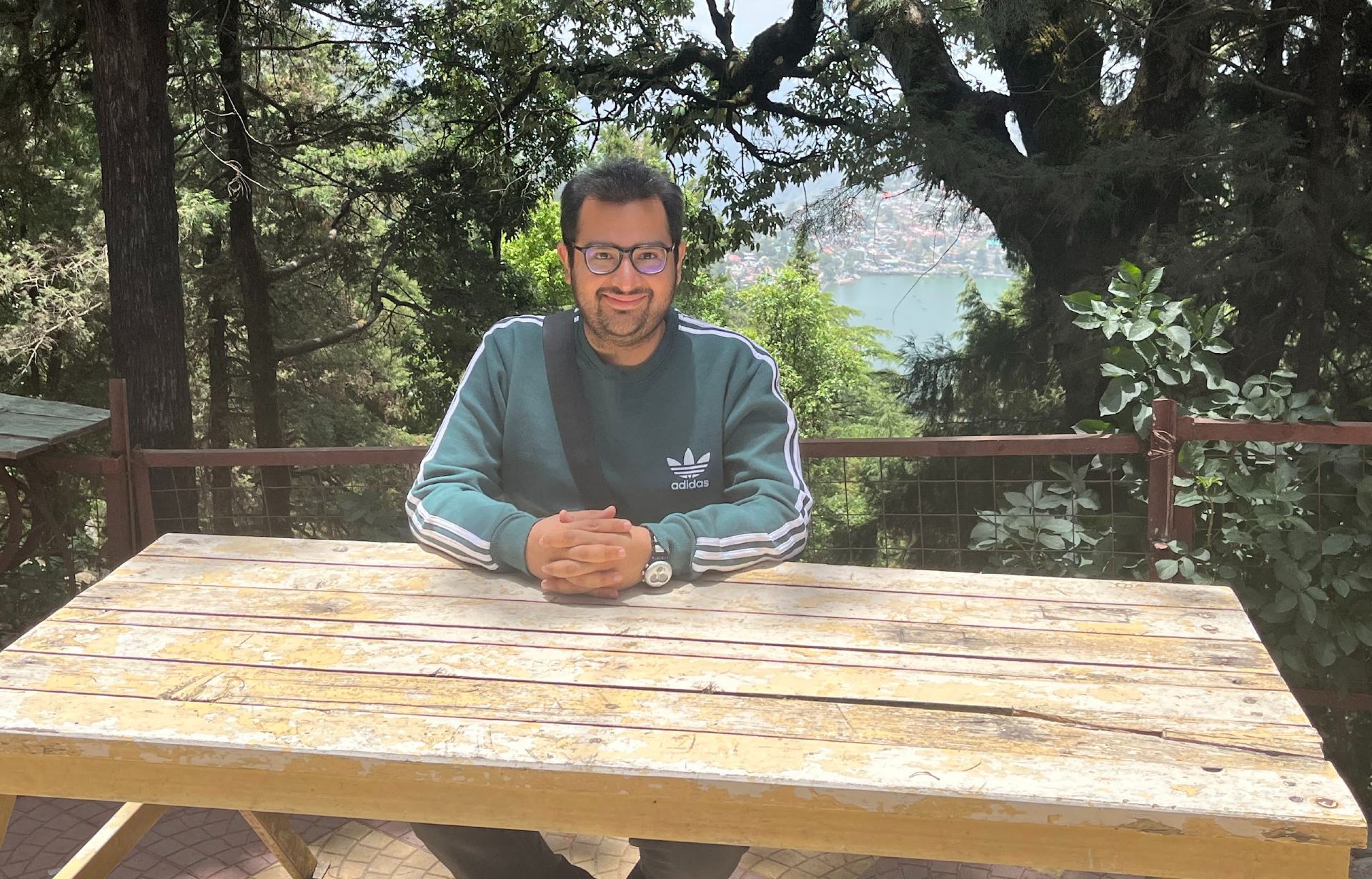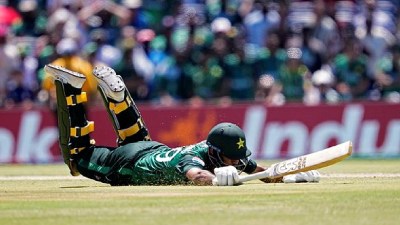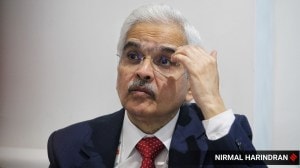- India
- International
‘There will always be limits to what a smartphone camera can achieve’: Zeiss CEO
The idea of having multiple cameras on a device, Kaschke said, is to make enhance photos and treat smartphones DSLR-like.
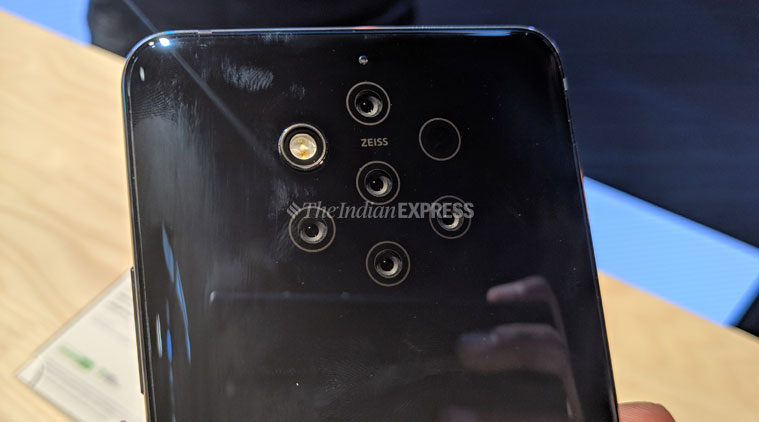 Nokia 9 PureView, which was introduced at this year’s Mobile World Congress in Barcelona, uses a penta-lens camera system on the rear that utilises Zeiss optics. (Image credit: Hansa Verma/The Indian Express)
Nokia 9 PureView, which was introduced at this year’s Mobile World Congress in Barcelona, uses a penta-lens camera system on the rear that utilises Zeiss optics. (Image credit: Hansa Verma/The Indian Express)
“Smartphone cameras may have evolved over the years and changed the way we take pictures, but there is a limit to what a phone camera can achieve,” Dr. Michael Kaschke, President and CEO of Zeiss Group, is categorical. Kaschke will know, given his company is one of the top players in the optical systems segment with stakes in everything from cameras to smartphones, medical equipment, and even spectacle lenses.
While there will be limits to what a smartphone camera can do, computational photography could be a game-changer. “There is more software to it and less hardware, and we are developing software for computational photography. That said, there is still a limitation, the smartphone can only be that thick,” explained Dr. Kaschke who was in Gurugram recently to open Zeiss’ camera lenses experience zone at Museo Camera, India’s first museum dedicated to photography.
Companies like Google, Apple and Samsung are aware of the ergonomic and technical challenges and are taking the help of software and computer processing to improve image quality. Google, for instance, has mastered Computational photography and the Pixel 3 XL is the perfect example that proves how a software and hardware confluence can drive digital photography to new levels.
Putting more camera lenses on phones is another way to improve picture quality. Huawei P30 Pro has four cameras on the back, Samsung Galaxy S10+ has three cameras and Nokia 9 PureView offers five cameras on the rear. Apple is also rumoured to launch the next iPhone with three rear-facing cameras. But what do so many camera lenses do?
The idea of having multiple cameras on a device, Kaschke said, is to make enhance photos and treat smartphones DSLR-like. However, the fact remains that because you only have such a small depth in a smartphone, you cannot increase the sensor size. So low light will always be a problem along with the lack of telescopic performance of a good camera.

“So while the mass of standard photography will be done here, the professionals will use professional and semiprofessional cameras,” he said.
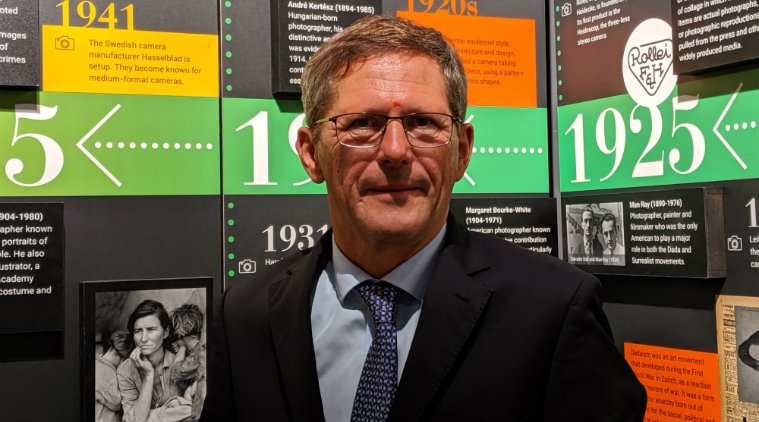 Dr. Michael Kaschke, President and CEO of Zeiss Group, was in India recently to inaugurate Zeiss’ camera lenses experience zone at Museo Camera in Gurgaon. (Image credit: Anuj Bhatia/The Indian Express)
Dr. Michael Kaschke, President and CEO of Zeiss Group, was in India recently to inaugurate Zeiss’ camera lenses experience zone at Museo Camera in Gurgaon. (Image credit: Anuj Bhatia/The Indian Express)
Despite the popularity of smartphone cameras, Kaschke said there will always be a segment for highly qualitative, artistic and professional photography. This is where Zeiss wants to focus. “So instead of going to the common variety of photography, which I think the smartphone will eventually prevail over, we focus on the professionals, semi-professional and artistic photographers,” Kaschke said.
‘Nokia 9 PureView has the best optics’
It’s not that Zeiss does not want to work with smartphone companies and perfect the camera experience on phones. In fact, the optics manufacturer now has a partnership with HMD Global, the Finnish company that has rights to produce Nokia-branded phones. Nokia and Zeiss share a long history and found success with phones like the Nokia N95, 808 PureView and 1020 PureView.
HMD Global’s Nokia 9 PureView, which was introduced at this year’s Mobile World Congress in Barcelona, uses a penta-lens camera system on the rear that utilises Zeiss optics. Initially there was a lot of buzz when the phone was announced, however, the device received mixed reviews from the press.
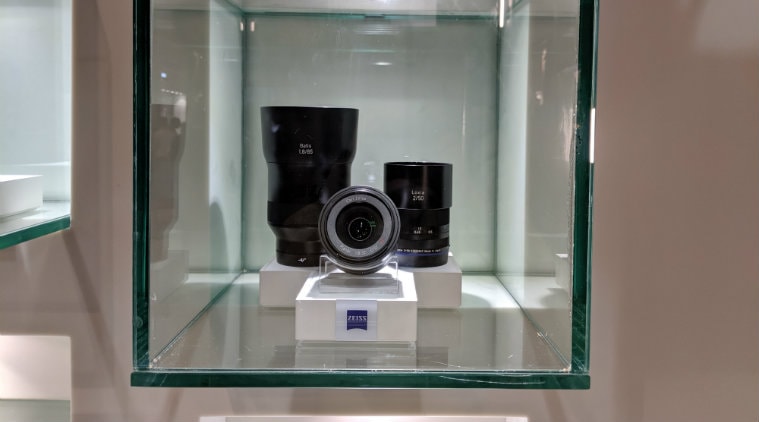 Zeiss, which is a Germany-based company, is the leading name in camera lenses. (Image credit: Anuj Bhatia/The Indian Express)
Zeiss, which is a Germany-based company, is the leading name in camera lenses. (Image credit: Anuj Bhatia/The Indian Express)
While Kaschke didn’t comment on what went wrong with the phone, he did defend the camera technology that powers the Nokia 9 PureView. “The optical quality on the phone [Nokia 9 PureView] is probably one of the best that you can find. But as I said before, the optics, the smartphone, and the software have to work perfectly together. I see that computational imaging is still in its early stage and multi-lens photography on the smartphone is just in the making, and I still think we all have to go for it,” he explained.
Kaschke agrees that the smartphone market has gone flat and companies have no choice but to differentiate their phones through camera technology. “I would say the image taking capabilities of a smartphone will once again, as a couple of years ago, have become a differentiator in smartphone technology. Otherwise, you already see a flattening revenue number in smartphones. So I don’t think they will be adding another app or another software feature to drive the volume. What will drive the volume again is the increased performance of photography on the smartphone,” he said.
“I’m convinced we will find other new solutions. What exactly they are, I don’t know but the right thing is to go into computational imaging which means we need different ways of taking a picture with different sensors, not just one sensor because one sensor will never completely compete with a good camera.”
’40MP is more than enough’
For the longest time, there was no talk of the megapixels, neither from smartphone companies nor from camera makers. But it appears that the megapixel war is back, with some smartphone OEMs on the verge of announcing 64MP camera phones. Even traditional camera makers like Sony are not behind, with the Japanese company recently announcing the 7R IV, the world’s first 61MP Full-Frame camera.
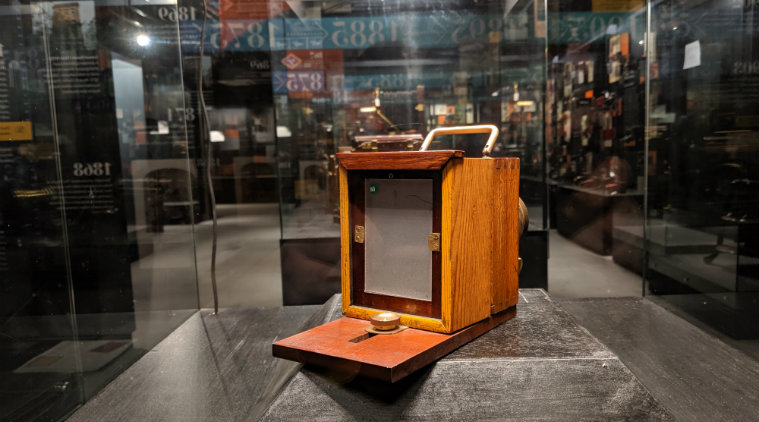 Museo Camera is first of its kind museum in India dedicated to photography. (Image credit: Anuj Bhatia/The Indian Express)
Museo Camera is first of its kind museum in India dedicated to photography. (Image credit: Anuj Bhatia/The Indian Express)
But Kaschke is not impressed. “More pixels are not necessarily better. Why? If you stay with the full-frame sensor and divide that sensor into more and more pixels, the pixels become smaller and smaller, and then you get into a noise problem. I think for most of the applications, also serious professional applications, my guess would be the 40MP is already more than enough.”
“People always say having more is better, but I think there are limits in terms of processing speed limits, in terms of noise, signal to noise ratio. So you always need to consider at what expense do you get more. And I think we are already at the tipping point.”
More Tech
Jun 07: Latest News
- 01
- 02
- 03
- 04
- 05








